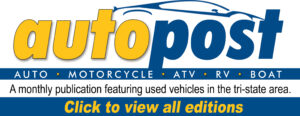MORGANTOWN — Over the last year or two, the city of Morgantown has placed dozens of cameras in and around its downtown in an effort to both deter criminal activity and assist in the enforcement of criminal law.
Now the city is hoping the state will allow it to use similar technology to go after traffic offenders.
During a recent sit-down with state lawmakers, city representatives said they’d like the legislature to take a look at West Virginia Code 17C-6-7a, which currently prohibits using cameras to enforce any state, county or local law relating to traffic regulations.
The suggestion put forward by the city includes limitations that would focus camera-assisted enforcement to specific illegal activities, including driving 10 or more miles per hour over the speed limit; failure to stop at a red light or stop sign; or failure to stop for a pedestrian at a marked crosswalk.
Having more electronic eyes in the sky, the city argues, is a remedy multiple states have turned to in the face of a prolonged, nationwide shortage of police officers.
In Morgantown’s case, its understaffed police force is patrolling the most dangerous city in the state for vulnerable (non-motorized) road users according to the West Virginia Department of Transportation.
The WVDOT’s Vulnerable Road User Assessment is part of the 2022-26 West Virginia Strategic Highway Safety Plan. It found that the top six – and 11 of the top 14 – riskiest road segments in the state are in Morgantown. All told, Morgantown has 12 of the top 25.
Damien Davis, director of engineering and public works for the city, said the city would like to focus the cameras in those areas, which are primarily concentrated along the University/Don Knotts/Beechurst and Patteson Drive corridors.
Delegate Joe Statler said he can already hear the arguments against allowing such activity.
“People get down in the weeds. I can tell you. If you take this forward, it’s going to get down in the weeds. ‘How much is Big Brother looking at? What is out there? What are you putting on camera?’ We know that when anything bad happens, we put out a big net to see how many people have surveillance cameras available. We use that to gather information and evidence a lot of times,” he said. “Those would be the kind of things I’d want to know. What is your actual point of view as far as what you’re aiming to catch?”
City officials said it would be limited specifically to traffic enforcement.
“We’re trying to increase the foot traffic in our downtown area. The last thing we want is people running red lights when we have a lot of pedestrians walking around enjoying our shops and stuff like that,” Mayor Joe Abu-Ghannam said.
Statler said there has been a recent push in Charleston to change the law in question for the purpose of monitoring speed in construction zones. That, he added, may be the city’s way in.
“If you open up that code and use it through the work zones, you could arguably say that if it makes it safer through work zones, it would be safer through the zones you’re talking about; the corridors that have a lot of pedestrian travel where we know a lot of accidents happen,” he said.




